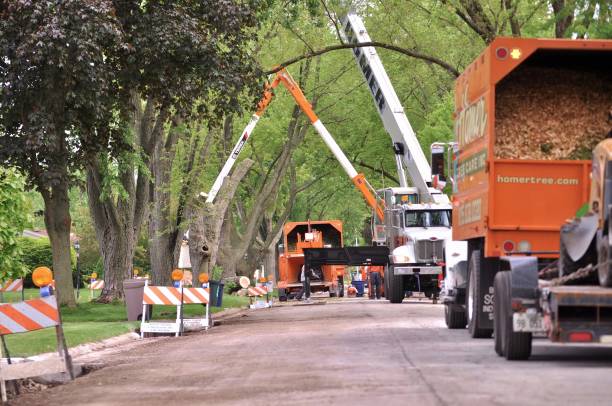If you plan to cut down a small tree in your backyard, prioritizing safety is essential.
Start by checking your tools and wearing protective gear to reduce risks.
Preparing the area and planning your cuts carefully can prevent accidents and ensure a smoother process. With the proper techniques, you can complete the task efficiently.
So, what steps should you follow to make the process safe and successful?
Assessing Your Tools and Safety Gear
Before cutting down a small tree, the right equipment and protective gear are essential to ensure safety and efficiency.
Essential Tools for the Job
Having the proper tools makes the task easier and safer.
- Chainsaw or Hand Saw: Ensure your saw is sharp and in good working condition for smoother cuts.
- Ladder: Use a sturdy ladder if the tree’s height requires elevation.
- Rope: Useful for guiding branches or controlling their fall direction.
- Pruning Shears: Ideal for trimming smaller branches before larger cuts.
Protective Safety Gear
Wearing the right gear minimizes risks during the job.
- Protective Eyewear: Shields your eyes from flying debris.
- Gloves: Protects from cuts, splinters, and rough bark.
- Hard Hat: Essential for guarding against falling branches or debris.
- Sturdy Boots: Ensures stability and reduces the risk of slipping.
Additional Tips for Safety and Success
- Inspect all tools for defects before starting.
- Ensure your workspace is clear of tripping hazards.
- If unsure about your equipment or technique, consider consulting a professional.
Proper preparation with the right tools and protective gear will increase your safety and improve the outcome of your tree-cutting project.
Planning the Cut and Preparing the Area
Proper planning and preparation are essential for safely cutting down a small tree.
Assessing the Surroundings
Before you begin, check the area for potential hazards.
- Identify Obstacles: Look for power lines, fences, or structures that could be damaged.
- Plan an Escape Route: Establish a clear path to retreat if the tree falls unexpectedly.
- Mark a Safety Zone: Keep bystanders, pets, and belongings at a safe distance.
Evaluating the Tree’s Lean and Fall Direction
Understanding the tree’s natural lean will help you predict its fall.
- Check Branch Growth: Heavier branches may influence the direction of the fall.
- Pick a Safe Fall Zone: Aim for an open area without obstacles.
- Use Guide Ropes: Ropes can help control the tree’s descent if necessary.
Preparing Your Tools and Safety Gear
Ensuring everything is in working order will improve both safety and efficiency.
- Inspect chainsaws, saws, and ladders for any defects.
- Confirm your protective gear, like eyewear, gloves, and boots, is secure.
- Have a first aid kit nearby for added precaution.
By carefully planning your cut and preparing the area, you’ll minimize risks and ensure a smoother tree-cutting process.
Executing the Cut and Removing the Tree
Careful technique and awareness are essential for a successful and safe tree removal.
Positioning Yourself for Safety
Start by placing yourself in the optimal position.
- Face the Fall Direction: Stand on the side where you want the tree to fall.
- Plan Your Escape Route: Ensure your retreat path is clear before you begin.
- Check for Stability: Ensure the ground is stable to maintain balance while cutting.
Making the Cuts
Precise cuts will help control the tree’s fall.
- Create a Notch Cut: Make a 45-degree cut about one-third into the trunk.
- Add a Back Cut: On the opposite side, cut slightly above the notch’s base to release the tree.
- Monitor Movement: Watch for signs that the tree is leaning, and retreat to your escape route.
Clearing the Area
Once the tree is down, clear the site efficiently.
- Remove Branches First: This makes cutting the trunk easier.
- Cut the Trunk into Sections: Creating smaller pieces simplifies disposal or firewood preparation.
- Check for Hidden Hazards: Inspect the area for fallen branches or unstable debris.
Following these steps will ensure a safer, more organized tree removal process.
By following these safety steps and using the proper techniques, you can confidently cut down a small tree while minimizing risks.
Proper preparation, careful cutting, and thorough cleanup will help you complete the task efficiently and keep your outdoor space safe and tidy.
If you’re unsure about the process, seeking professional assistance is always a smart choice.

